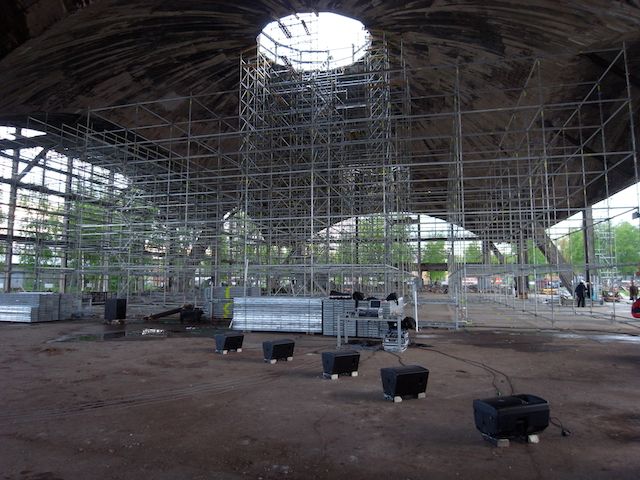
Speaking with Spaces
07.07.2011 20:00
Charles Curtis (US) – Naldjorlak (by Eliane Radigue)
Hobuveski (Horse Mill Theater), Lai 23, Tallinn map >>>
08.07.2011 21:00
Charlemagne Palestine (BE) – Schlingen Blängen (organ performance)
Niguliste Church, Niguliste 3, Tallinn map >>>
09.07.2011 21:00
Thomas Ankersmit (NL/D) – Saxophone and Synthesizer Improvisation
Kultuurikatel, Põhja puiestee 27, Tallinn map >>>
10.07.2011 21:00
Maja S.K. Ratkje (NO) – Electro-acoustic Vocals
Rotermann warehouse / Nisu-Rukkijahu veski, Rotermanni 6, Tallinn map >>>
Tickets at the venue 8,-/10,- EURO
Buy Tickets online beforehand >>>
Traditional and classical music often treat the performance hall as a tabula rasa to be inscribed with sound, and even improvised music can overlook the site it is performed within as an important factor. So what happens when a musician decides to play a duo with space as the partner?
Tuned City has invited four vibrant, innovative and influential contemporary performers to address the topic of sound and space through four individual music performances. Each artist has developed a special relationship over their career with their chosen instrument–the cello, the organ, the saxophone and the voice–which becomes like a spoken idiom to them. Using this unique language, the performers will engage in dialog with a variety of spaces, from the warm, wooden intimacy of a 14th Century horse mill to the cold, concrete depth of Soviet-era industrial structures.
“Naldjorlak” was born of a collaboration between American cellist Charles Curtis and French electroacoustic composer Eliane Radigue. The core of the work is a series of tunings Curtis developed which set the individual elements of the cello such as the tailpiece, endpin and endpin wire in resonance with the body, exposing the so-called wolf tones of the instrument. This results in almost any bowing action made with the cello ringing it like a bell. From the palette which Curtis presented, Radigue selected and arranged the sounds into the final composition presented this evening.
The monumental “Schlingen Blängen” organ performances of world renown American minimalist Charlemagne Palestine, on the other hand, depend upon a particular playing style which can be adapted to the organ and location at hand. By utilizing sustained tone clusters played “out of tune” with his typical trance-like, ritualistic delivery, Palestine succeeds in creating seemingly millions of simultaneous melodies, harmonies and rhythms which will sweep through the space of the Niguliste church. “You hear it as if someone else is playing the organ,” he says, “but they’re not! It’s the organ playing itself!”
For Dutch saxophone and synthesizer improvisor Thomas Ankersmit, sound must not become merely the decoration for a space. It should rather speak on a formal level with the volumes, masses, resonances and reflections found there. Employing the hyper-directional and microtonal capabilities of the saxophone alongside the textures and drones of the Serge Modular Synthesizer, Ankersmit sets out to explore the archi-sonic features of the half finished Kultuurikatel wich still breathes the ghost of the ›Zone‹ of Tarkowski’s »Stalker« wich was partly shot in this location.
Perhaps the most intuitive instrument of all, the human voice extends directly from the body and exists in feedback with the body. But how little we notice the sound of our own voices, returning to us from the room to describe to us where in fact we are! Using electronics and a four-channel sound system to extend her own voice from a whisper to a roar, Norwegian experimental vocalist Maja S.K. Ratkje seeks a sense of place within the empty expanse of an abandoned storage building and fills it anew with her unique sonic identity.